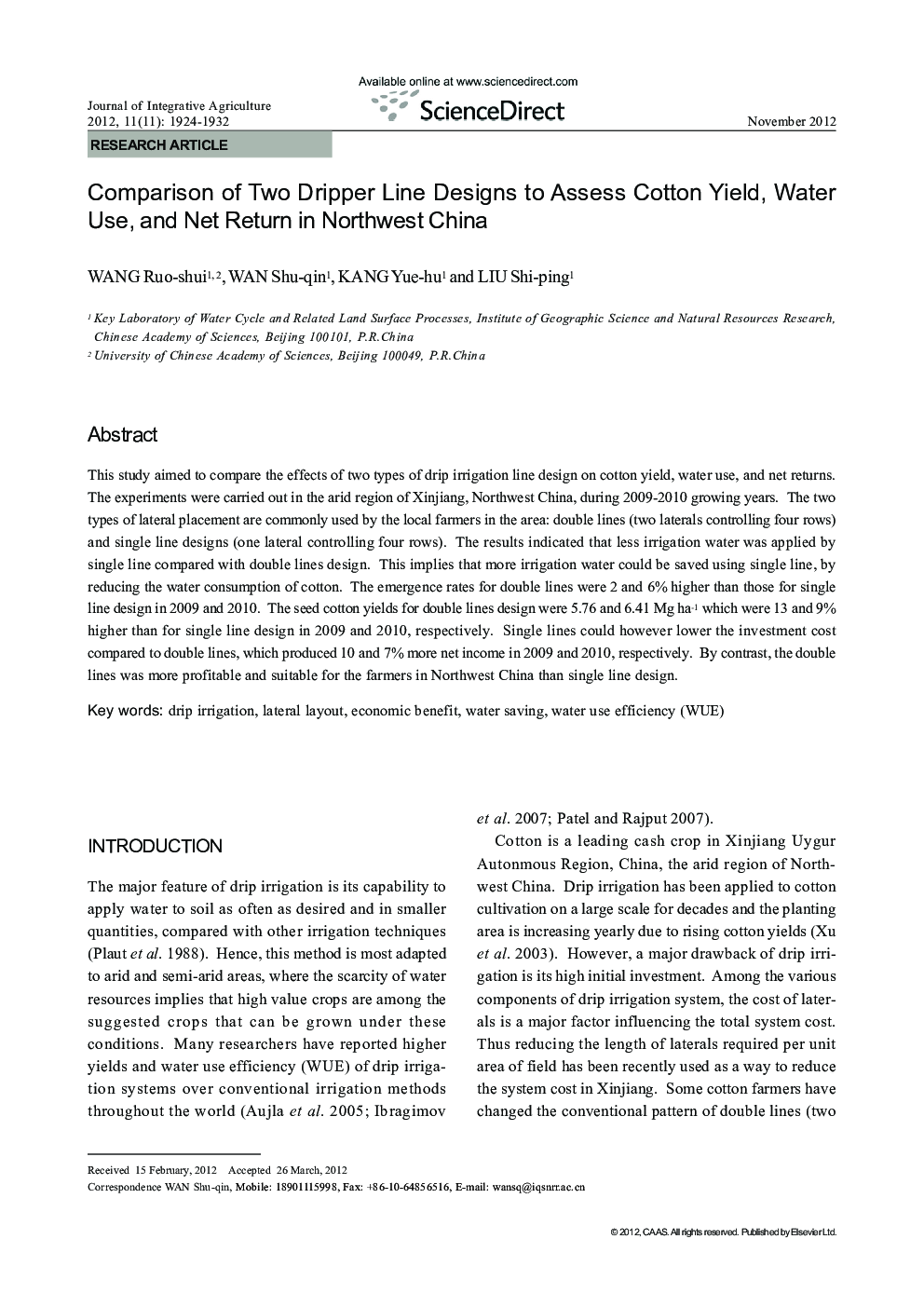| Article ID | Journal | Published Year | Pages | File Type |
|---|---|---|---|---|
| 4494997 | Journal of Integrative Agriculture | 2012 | 9 Pages |
This study aimed to compare the effects of two types of drip irrigation line design on cotton yield, water use, and net returns. The experiments were carried out in the arid region of Xinjiang, Northwest China, during 2009-2010 growing years. The two types of lateral placement are commonly used by the local farmers in the area: double lines (two laterals controlling four rows) and single line designs (one lateral controlling four rows). The results indicated that less irrigation water was applied by single line compared with double lines design. This implies that more irrigation water could be saved using single line, by reducing the water consumption of cotton. The emergence rates for double lines were 2 and 6% higher than those for single line design in 2009 and 2010. The seed cotton yields for double lines design were 5.76 and 6.41 Mg ha−1 which were 13 and 9% higher than for single line design in 2009 and 2010, respectively. Single lines could however lower the investment cost compared to double lines, which produced 10 and 7% more net income in 2009 and 2010, respectively. By contrast, the double lines was more profitable and suitable for the farmers in Northwest China than single line design.
